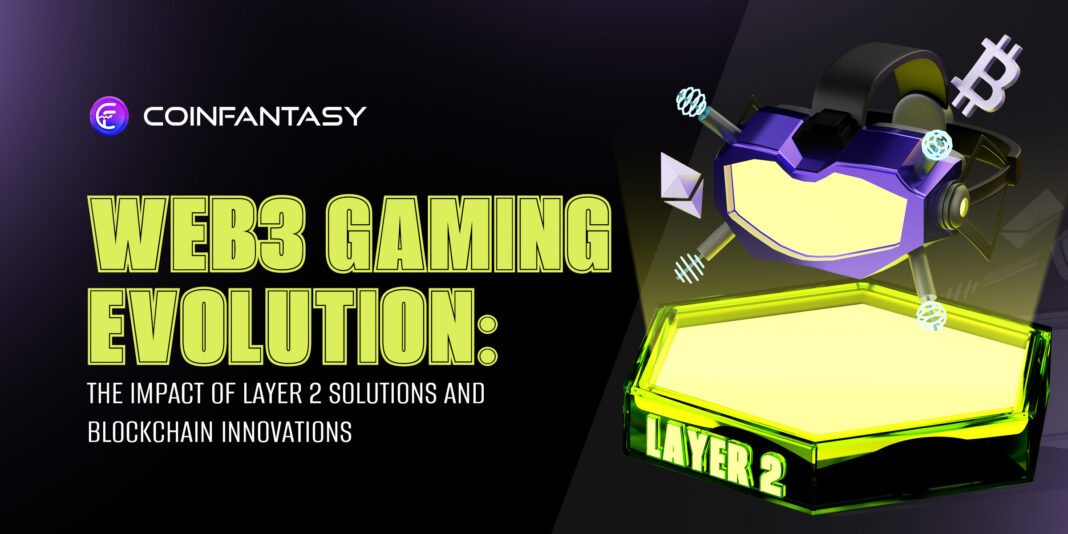In recent years, a profound change has occurred in the gaming industry with the advent of Web3 technology. Web3 gaming introduces a decentralized shift that improves player mechanisms and opens up new business prospects. As web3 gaming technologies and solutions develop, game experiences continue to improve. This blog examines how layer 2 solutions and blockchain work together and how they differ from the web3 gaming evolution.
“Web 3.0 is the decentralized web, where the power will shift from centralized platforms to individuals, creating a more equitable and open internet. “
– Joe Lubin, Co-founder of Ethereum
The Need for Layer 2 Solutions in Web3 Gaming Ecosystem
In web3 gaming evolution, scalability is a big problem. More users engaging with decentralized apps (dApps) may cause the primary blockchain to become crowd, resulting in expensive transaction fees and sluggish speeds. Layer 2 solutions manage transactions off the main chain, which mitigates these issues.
Opening Up New Options in Web3 Gaming Evolution
With NFT trends, one may create distinct, verifiable digital assets that can stand for anything from virtual real estate to in-game assets. Combining with well-known Layer 1 and Layer 2 technologies enhances support in the gaming industry.
Layer 2 Solutions: Improving Scalability and Gaming Performance
Layer 2 solutions are technologies that enhance the scalability and performance of current blockchain networks. These consist of state channels, rollups, and plasma, each created to tackle particular issues with network efficiency, cost, and transaction speed.
Effect on the Performance of Games
Layer 2 solutions have decreased prices and increased transaction speeds, significantly enhancing gaming performance. Through web3 technology breakthrough eliminates the need for expensive transaction fees to support intricate in-game economies and real-time interactions.
User experience
In addition to increasing scalability, layer 2 solutions also increase user experience through the following key factors. First, lower transaction fees increase the viability of microtransactions and improve the availability of in-game purchases. The real-time games and interactions enhance the experience with quicker transaction processing. Lastly, increased scalability permits larger player interactions and more intricate game elements without compromising performance.
Blockchain Infrastructure: The Foundation for Advanced Technologies
The infrastructure of blockchains refers to the core technology that drives the functioning of Layer 1 blockchains. It includes the foundations of network protocols and the technical structure that provides the blockchain’s security and usability.
Enhance Ethereum’s system structure with PoS consensus and shard chains to raise its capacity and low consumption of power. Proof-of-stake and delegated proof of stake enhance transaction confirmation and the security of the blockchain. Louder, improvements in sharding and other technologies push forward the boundaries of blockchain-powered gaming capacity for large-scale transactions.
How do Layer 2 solutions and blockchain technology work together?
The synergy between Layer 2 solutions and blockchain infrastructure is equally important. And, it enhances web3 gaming evolution by addressing the limitations of both layers:
Increased Scalability
Layer 2 solutions help decentralize the processing of transactions. Thus, reducing the load on the main chain and the ability of the blockchain network to process more transactions. Layer 2 transactions are generalized above the base layer due to the changes that enhance the base layer, for example, Ethereum 2.
Enhanced Performance
The Layer 2 solutions aim to offer faster and cheaper transactions to enhance the gaming experience. Blockchain upgrades guaranteeing that such enhancements are built above a reliable and enhanced infrastructure underlines it.
Cost Efficiency
Applications at Layer 2 are focused on lowering transaction fees, the transactions might occur off-chain or more optimally, thus making microtransactions and other in-app purchases cheaper. Blockchain system enhancements also help in minimizing the rate at which the network charges, along with other cost factors.
Security and Trust
Users’ funds are safe through Layer 1, and Layer 2 solutions securely store disputes in the Layer 1 blockchain, maintaining the safety of users’ funds. Developments in blockchain infrastructure improve mainchain security, while Layer 2 solutions are possible on a solid foundation.
Conclusion
Notable developments in blockchain infrastructure and Layer 2 solutions characterize the progress of Web3 gaming. These technologies are driving enhancements in game quality, scalability, and ecosystem development. Looking ahead, the Web3 gaming scene will undergo even more transformation as a result of the ongoing integration of these advancements, presenting players and developers with exciting new opportunities.
“Click here to read the web3 gaming growth phase and key factors for your knowledge. Explore now!”
The future of web3 gaming consensus methods and sharding are two emerging topics in Layer 2 solutions and blockchain architecture. These technologies will improve Web3 gaming platforms’ functionality, security, and scalability even more. The impact of Web3 on the gaming industry will continue to change as a result of ongoing developments, resulting in more creative and player-focused experiences.
Why stop here? Take the next step and explore the full journey now!

